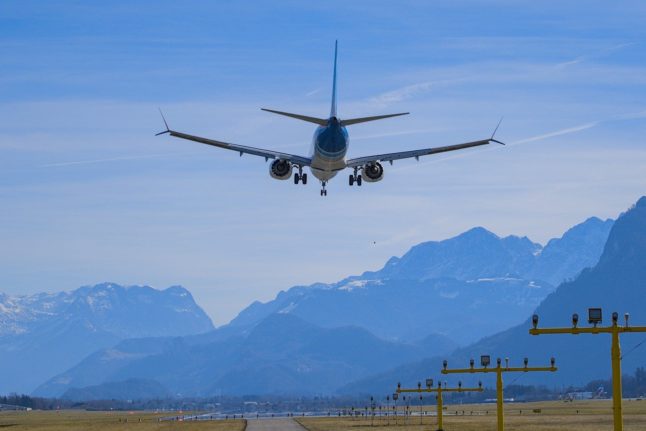One is a landlocked country in central Europe, while the other is a huge mass of land surrounded by the Indian Ocean, on the other side of the world.
But that doesn’t stop people getting on the wrong plane and flying to the wrong country because their names sound similar – at least according to some.
Recent posts doing the rounds on social media claim that it’s a fairly common occurrence for people looking for Australia to end up in Austria.
A post by Nazir Afzal on X, the site formally known as Twitter, shared a photo of a sign from Salzburg airport that said: “Sorry, this is Austria not Australia! Need help? Please press the button.”
Afzal then said that “more than 100 passengers fly to Austria” instead of Australia every year, adding that this photo was Salzburg airport’s special help desk.
More than 100 passengers a year fly to Austria when they meant to fly to Australia
So Salzburg Airport has a special counter for them pic.twitter.com/kAo2cQDbBv— nazir afzal (@nazirafzal) October 15, 2023
Perhaps the tweet was tongue in cheek – but it got a lot of people talking.
At the time of writing on Monday afternoon it had received 2.1 million views, was liked more than 18,000 times and had hundreds of comments.
“What does the help button do, what are the next steps, any first person accounts?” asked one social media user.
“Doesn’t surprise me one bit,” said another user. “My wife currently has a parcel sent from the UK that quite clearly said Austria on the front sitting in Australia right now.”
Since the initial tweet, the claim has been repeated on social media.
If you’re having a bad day just remember that the Salzburg airport has a counter for people who flew to Austria instead of Australia
— Melanie Balke (@Melanie_Balke) October 19, 2023
However, on further investigation, it is clear that the sign isn’t an airport desk – instead it’s an advert for a company called Commend that offers intercom systems.
I do love this, but it is a humorous ad for Commend, the intercom company. The image is not actually a desk, but rather the ad on a luggage area (you can see if you brighten it up). A very clever ad. In a way makes it better. pic.twitter.com/qG2Hn9XT8A
— dan barker (@danbarker) October 15, 2023
The Local asked Salzburg airport if there was any truth in the claims, and to clear up whether people do fly to the Alpine nation by mistake.
“Although it is true that people sometimes confuse Austria with Australia, we have never heard of a single passenger who landed in Austria instead of Australia in error,” a spokeswoman from Salzburg Airport told The Local. “There is definitely no help desk in Salzburg for these passengers, since this simply never happens.”
We also contacted Vienna airport who told us that they’ve never experienced this situation with passengers either.
So it seems that people don’t come to Austria accidentally when they’re aiming to go “Down Under”.
But the two countries are mixed up sometimes. In 2016, CNN was mocked for sharing a banner on screen that said that Australia was ‘building fence at Slovenian border.’
In 2022, the rock band KISS were playing in Vienna, Austria’s capital, but paid tribute to the audience with a message in the colours of the Australian flag.
Kiss played in Austria last night 🇦🇺 pic.twitter.com/XAvaXfRGqh
— Ben Nguyen (@BenNguyenTV) June 27, 2022
The names do sound similar but it’s worth remembering that Austria in German is Österreich. It comes from the Old High German word “Ostarrîchi”, meaning “eastern realm”.
READ ALSO: Why is Austria called Austria?
Meanwhile, the name Australia is said to be derived from the Latin australis, meaning “southern”.
If anyone is still having trouble remembering which is which, take a tip from these Tshirts.
There’s a shop at Vienna Airport that sells nothing but these t-shirts in a variety of different colours. pic.twitter.com/KVlAcjerbG
— Matthew Breckenridge (@mtb_hb) October 15, 2023



 Please whitelist us to continue reading.
Please whitelist us to continue reading.
Member comments